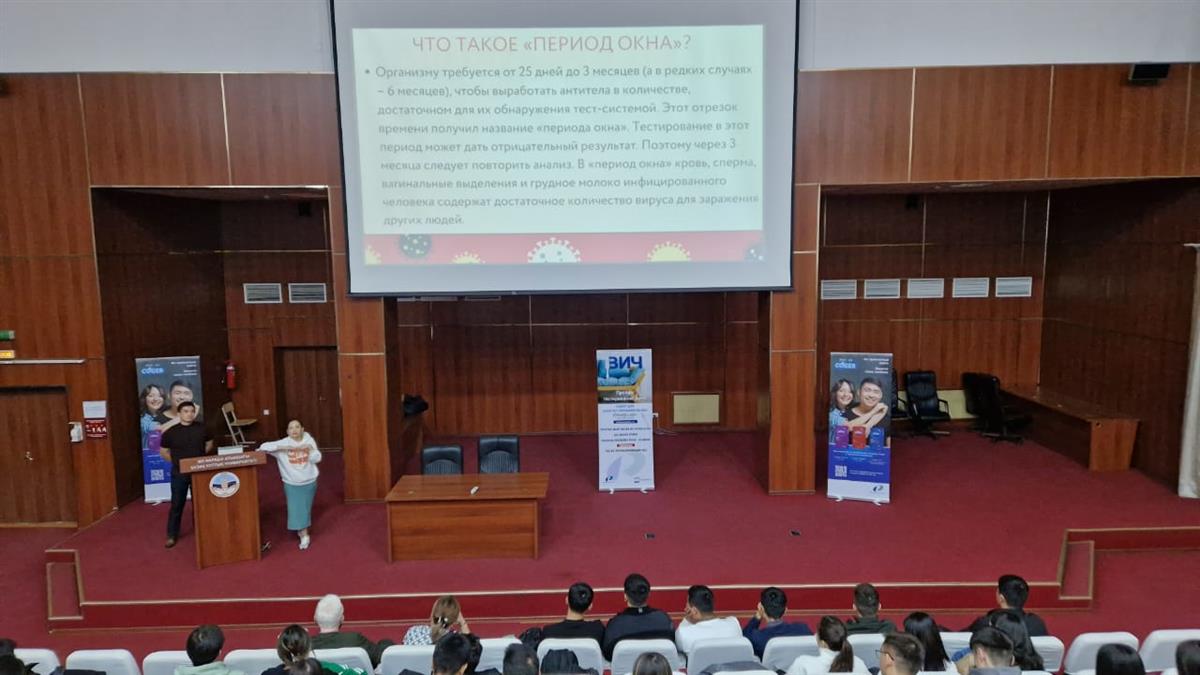HIV: Facts, myths and prevention
Views: 364

The Faculty of Mechanics and Mathematics, in accordance with paragraph 3 – “Healthy lifestyle and well-being” of the TIMES HIGHER EDUCATION IMPACT RANKINGS (17 SDGs), organized a lecture on the topic “HIV: Facts, myths and prevention” for 3rd year students of the faculty and supervisors. which was conducted at a good methodological level by representatives of the pharmaceutical company Roger's Pharma Ruslan Aitbaev, Laura Albergenova and a representative of the AIDS center, epidemiologist Ainur Nurgabidollaevna. The event was attended by 115 students studying in the specialties “Actuarial Mathematics”, “Mathematical and Computer Modeling” and “Computational Sciences and Statistics”.

First, the lecturers, using WHO (World Health Organization) terminology, gave the well-known definitions of HIV (Human Immunodeficiency Virus) and AIDS (Acquired Immune Deficiency Syndrome). Students understood what HIV infection is, and also that AIDS is the last (terminal) stage of HIV infection and it is these infections that lead to the death of AIDS victims, and not the immunodeficiency virus itself.
Next, the lecturers, replacing and complementing each other, talked about the main routes of HIV transmission and in what cases it is not transmitted. After listening to information about methods and means of protection against HIV, the students clearly understood that it was necessary to use only their own or new personal hygiene items, and decided to use methods to prevent the transmission of HIV.
The event also had practical significance - at it, students took the OraQuick HIV Self-Test rapid test produced by the American company OraSure Technologies, a leader in the development of diagnostic devices designed to detect critical diseases.
Everyone present liked the OraQuick HIV Self-Test kit - these are quick and accurate saliva tests for HIV, the simplest, most painless and convenient way to find out your HIV status. It does not require blood sampling and minimizes the risk of infection. Takes only 20 minutes, test accuracy is 99.9%, WHO approved and certified.








